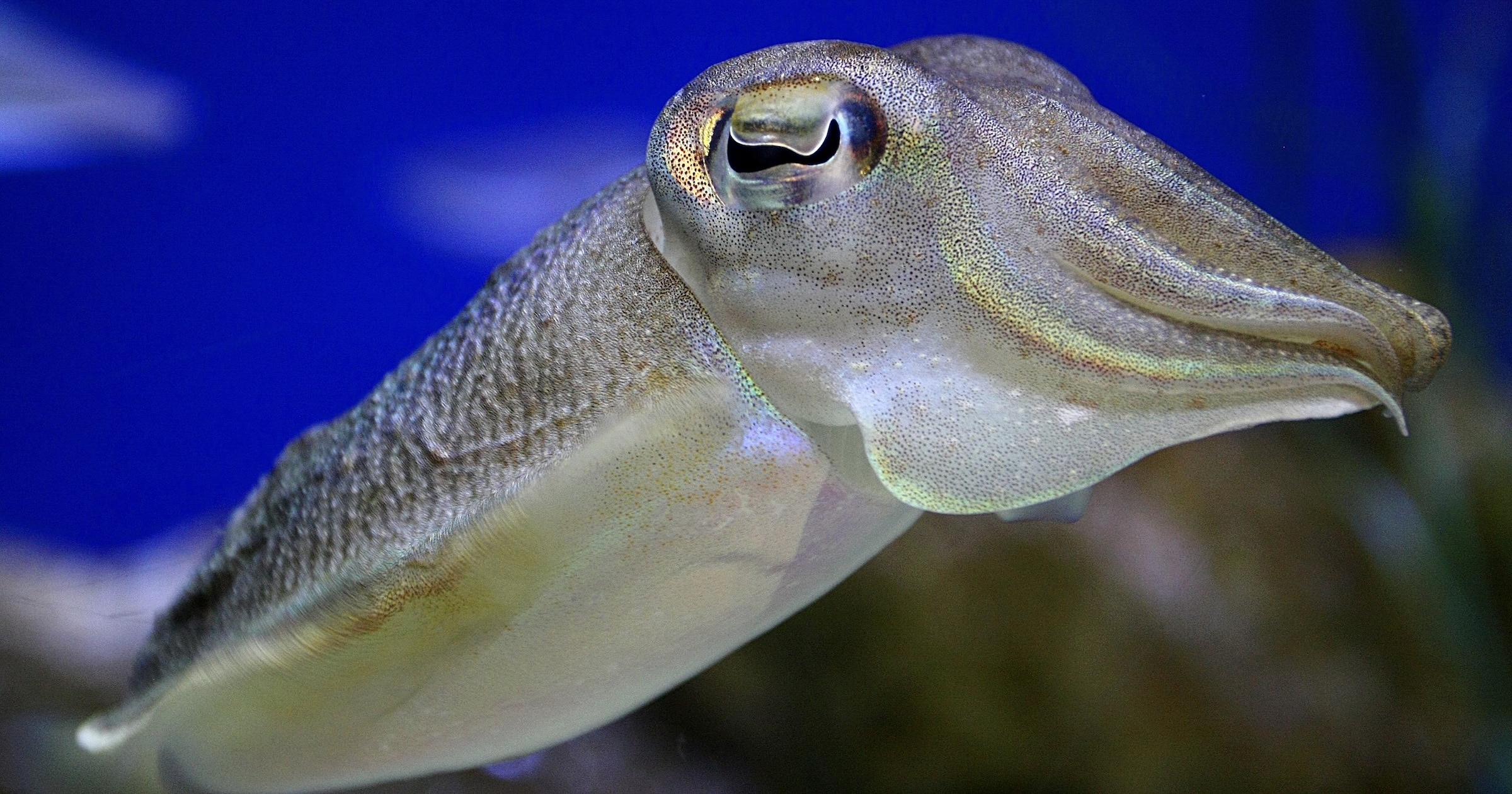 Evolution
Evolution
 Intelligent Design
Intelligent Design
Yet Another Engineering Innovation from Cuttlefish

Editor’s note: We are delighted to welcome Daniel Witt as a new contributor. In case you are curious about the background in his author photo, it was taken in a pyramid in Sudan, at Meroë.
Last month, Cambridge University’s science magazine, Bluesci, announced that researchers have developed a new camera based on cuttlefish eyes. Cuttlefish have unusual W-shaped pupils that allow them to see well in both dim and bright conditions as they navigate in deeper or shallower waters. The researchers successfully reverse-engineered the cuttlefish’s eye structure to create a camera that works better in conditions of highly variable luminosity.
Cuttlefish are extraordinary creatures, and this is not the first time engineers have learned from them. In 2013, the Washington Post reported that the Office of Naval Research was funding a project to mimic the cuttlefish’s color-changing skin, with potential application in submarine camouflage technology. In 2009, NBC reported that MIT scientists had studied cuttlefish skin to design a TV screen that used less than 1 percent of the power that other screens at the time used. The reverse-engineering opportunities just keep coming.
Usually, “reverse-engineering” implies that … well, engineering took place beforehand; design, in other words. And, as it happens, the news from Cambridge explicitly refers to cuttlefish eyes as “finely-designed.”
It was probably a slip-up. No doubt the writer would defend this as a mere convention of speech — I doubt that he was trying to imply that actual design took place in the creation of cuttlefish eyes. But isn’t it interesting that it’s so difficult to talk about these things without invoking the language of design?
Caught in the Weeds
Maybe it doesn’t seem so interesting. But that’s only because we’re so used to this reality. It can be easy to get caught in the weeds in the debate over whether Darwinian mechanisms are sufficient to explain life, and forget the reason the debate is going on in the first place. The debate only exists because these implausibly intricate engineering marvels exist. It did not have to be so. The universe could have been otherwise. It was never a given that when scientists looked deeper into life, they would find such exquisite designs; but they did.
As we gain the ability to look deeper and deeper into the inner workings of life, we seem to be entering a new renaissance of collaboration between biologists and engineers. Physicist Brian Miller recently noted this trend in the developing field of systems biology:
[W]hen you look at the design conversation, who controls it? It’s people who don’t have the expertise to really address it. They’re not engineers. They’ve been trained to see the world through this materialist grid, so they assume on faith that there’s no evidence of design, and then they find various reasons to justify that belief. In contrast, what you’re seeing in biology is really a revolution that’s at its early stages, because engineers are working more and more with biologists, and what you’re seeing is, when they do that they use design language, they use design assumptions.
An Engineering Marvel
As we all know, the prevailing theory insists that this appearance of design is mere illusion. But when engineers team up with biologists to learn how to copy the mechanisms of life, they aren’t thinking about that. Whether a cuttlefish eye is designed, or merely in every way appears to be designed, is irrelevant. The point is that it is an engineering marvel, and engineers can learn from it.
This fact is important, not because it is in-and-of-itself proof of design, but because it tells us something practical about the competing theories and their respective productivity.
Proponents of the neo-Darwinian model are fond of asserting that the naysaying arguments of ID-supporters (regarding irreducible complexity, non-traversable fitness landscapes, the probabilistic inability of Darwinian mechanisms to make meaningful changes to life within the lifespan of earth, lack of any confirmed observation of constructive mutations, etc.) make little difference to the actual research underway in biology. That is to say: Life only makes sense “in the light of evolution,” and the critics of that framework are just flies buzzing in the background.
A Verbal Gloss
The truth is something close to the opposite. Assumptions of macroevolution almost never have any practical bearing on research in biology. Darwinian evolution is invoked as a verbal gloss, not as a vital presupposition. Chemist and National Academy of Sciences member Philip S. Skell famously asked 70 distinguished researchers whether they would have done their work differently if they had believed Darwin’s theory was false. They all answered no.
Dr. Skell isn’t the only one to point this out; it’s the reality of the field. An assumption of design, by contrast, is quite often an essential foundation to successful research projects in biology — whether the design language is expurgated from the final presentation or not.
Biologists will continue to debate whether this design is real or only apparent. But in the meanwhile, intelligent design-based research will keep moving forward, untroubled by those debates — as it always has.
